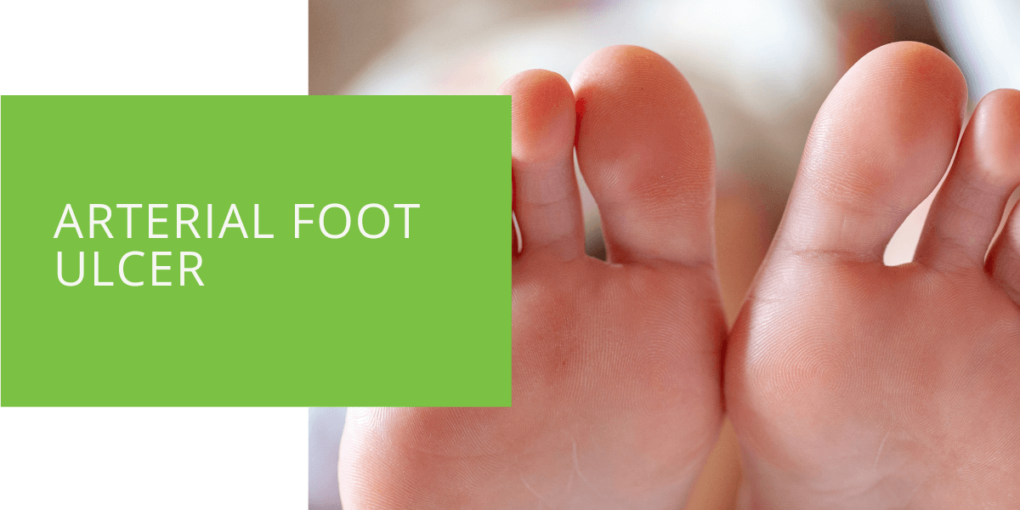Arterial Foot Ulcer: Causes, Symptoms & Treatment
Arterial foot ulcers are a serious and potentially life-threatening condition that can lead to amputation if left untreated. These ulcers are often caused by poor circulation in the legs and feet due to blocked arteries, which deprive the skin and tissues of oxygen and nutrients, forming an open wound. In this article, we will explore the causes, symptoms, diagnosis, and treatment of arterial foot ulcers and ways to prevent them.
Causes of Arterial Foot Ulcer
Peripheral artery disease (PAD) is one of the primary causes of arterial foot ulcers. PAD occurs when the blood vessels that carry blood to the legs and feet become narrowed or blocked, reducing blood flow to the extremities. Other causes of arterial foot ulcers include atherosclerosis, blood clots or embolisms, and risk factors such as smoking, high blood pressure, diabetes, and high cholesterol.
Symptoms of Arterial Foot Ulcer
The symptoms of arterial foot ulcers may include:
- Pain and tenderness in the affected area.
- Skin discoloration, such as redness or blue or purple discoloration.
- A wound or sore that won't heal or that heals slowly.
- Coldness or numbness in the foot or toes.
- Weak or absent pulse in the foot.
Diagnosis of Arterial Foot Ulcer
If you have a foot ulcer, your doctor may perform the following tests to diagnose an arterial foot ulcer:
- Physical examination: Your doctor will examine the affected area for signs of infection or tissue damage.
- Medical history: Your doctor will ask about your medical history, including any underlying conditions or risk factors for arterial disease.
- Doppler ultrasound: This test uses high-frequency sound waves to measure the blood flow in your arteries and veins.
- Angiography: This test involves injecting a special dye into your bloodstream and taking X-rays to visualize blood flow in your arteries.
- Blood tests: Blood tests can help diagnose underlying conditions contributing to arterial ulcers, such as diabetes or high cholesterol.

Treatment of Arterial Foot Ulcer
The treatment of arterial foot ulcers depends on the severity and underlying cause of the ulcer. Treatment options may include:
- Wound care and management: This includes cleaning the wound, applying dressings, and offloading pressure from the affected foot to promote healing.
- Medications to improve blood flow: Your doctor may prescribe pentoxifylline or cilostazol to improve blood flow to the affected area.
- Angioplasty or vascular surgery: In some cases, angioplasty or vascular surgery may be necessary to restore blood flow to the affected area.
- Lifestyle modifications: Making lifestyle changes such as quitting smoking, managing underlying health conditions, and wearing appropriate footwear can help prevent the recurrence of arterial ulcers.
Prevention of Arterial Foot Ulcer
Preventing arterial foot ulcers involves maintaining healthy lifestyle habits and managing underlying health conditions. Prevention tips may include:
- Quitting smoking or never starting.
- Exercising regularly to promote blood flow.
- A healthy diet maintains healthy blood vessels and lowers your risk of developing diabetes and high cholesterol.
- Controlling high blood pressure, high cholesterol, and diabetes.
- Wearing appropriate footwear to prevent foot injuries.
- Regularly inspect your feet for signs of injury or infection.
- Keeping your feet clean and dry to prevent infections.

Complications of Arterial Foot Ulcer
Arterial foot ulcers that are left untreated can lead to severe complications, including:
- Cellulitis: An infection of the skin and tissues that can spread to the bloodstream.
- Gangrene: Tissue death occurs when blood flow is severely restricted and the tissue is deprived of oxygen and nutrients.
- Amputation: In severe cases, amputation may be necessary to prevent the spread of infection or tissue death.
When to Seek Medical Attention
If you have any symptoms of an arterial foot ulcer, it's important to seek medical attention right away to get the care you need. The earlier the diagnosis and treatment, the better the chances of preventing serious complications. If you have any of the following symptoms, contact your doctor immediately:
- A wound or sore that won't heal or that is getting worse.
- Pain or tenderness in the affected area.
- Redness or swelling around the wound.
- Fever or chills.
Conclusion
Arterial foot ulcers are a serious complication of peripheral artery disease and poor circulation in the lower extremities. If left untreated, these ulcers can lead to severe complications, including gangrene and amputation. However, with early diagnosis and treatment, most arterial ulcers can be successfully treated and prevented from recurring. If you have any symptoms of an arterial ulcer, seek medical attention immediately to get the care you need. Remember to take good care of your feet to prevent ulcers from forming and maintain good overall health.

